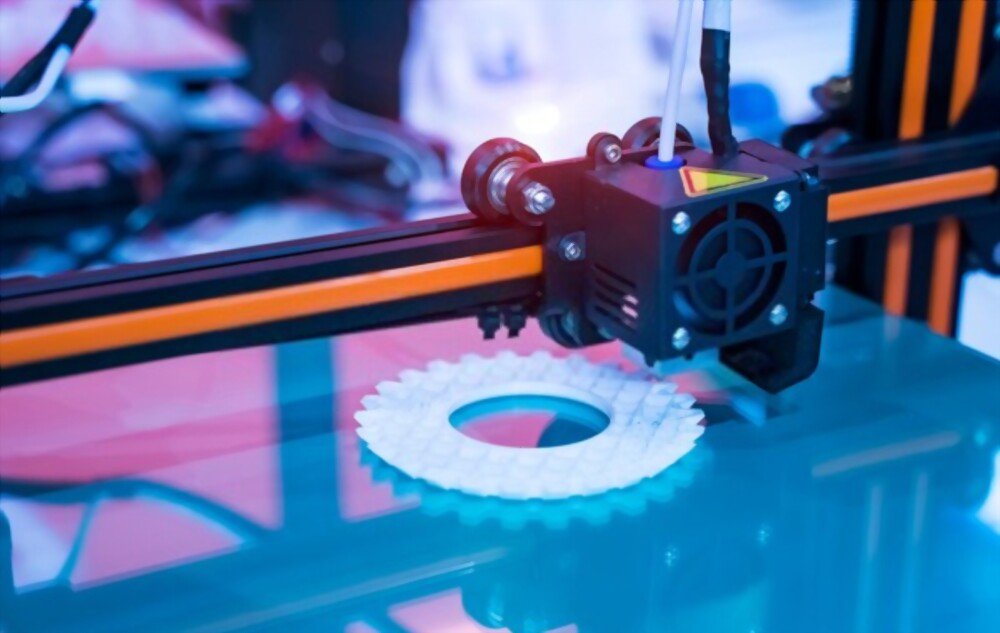You have certainly heard of 3D printing. This manufacturing process, which consists in printing, layers by layer an object, is today considered to be the fourth industrial revolution. Formerly used for the rapid prototyping of objects, the additive manufacturing has climbed many levels, in less than two decades. Full lights on this innovative technology that will significantly upset the future of our world.
3D printing, what is it?

3D printing is the other name given to additive manufacturing . This process designates a process for the design and manufacturing of objects, layer after layer. The industrial, automotive, technical and aerospace sectors are those where this production method is more requested. Unlike subtractive manufacturing, 3D printing makes it possible to carry out objects based on a model designed in 3D file.
The use of specific software ensures the cutting of the object in several tranches. These will then be assembled by successive layers. The assembly and solidification of the different layers are made thanks to a 3D printer in order to obtain a finished product. The creation of the part is done by adding all the layers.
The appearance of additive manufacturing dates back to the year 2000. At that time, it was used to make rapid prototyping. In doing so, technological advances have made it possible to develop a wide choice of possibilities both for the size and for the shape of the parts to be produced. Various materials such as plastic, plaster, metal, WPC or fiberglass allowed manufacturers to create parts of different series.

These materials are also used for the production of parts intended for surgery, aeronautics and in many other areas. You can cite the production of models, luxury products, jewelry, prostheses, implants, houses and even everyday accessories. 3D printing can offer a high design quality and a neat finish thanks to its innovative features.
What advantages offers 3D printing technology?
Speed of job completion is one of the main advantages of additive manufacturing. From now on, thanks to CAD software, you will do without the expertise of the numerous engineers that you had to bring together to design any object or part. From now on, the different stages of manufacturing an object are done in a very short time. Thus, 3D saves time which has a positive impact on business productivity.

In industrial factories, we are seeing an acceleration of work linked to the use of additive manufacturing. Furthermore, 3D printed parts offer excellent value for money. Indeed, 3D makes it possible to produce high-end products at low prices. Optimizing the time it takes to bring the product to market is the immediate consequence of this situation.
Precision in the design of objects is the other distinctive sign of 3D. 3D models constitute the starting point for manufacturing a product. It is from these models that the printer will reproduce the details and characteristics of each part. The non-existence of manufacturing defects is another advantage offered by this manufacturing process.
Using the expertise of a 3D company offers you the guarantee of careful, high-quality work. These structures have highly efficient material and human resources. You will be able to benefit from a local service and tailor-made support. Beam fusion, material extrusion, laser sintering, etc., 3D companies use different printing processes to enhance your order.
What are the steps in creating a 3D object?
As indicated in the introduction, additive manufacturing is a process of creating objects on a 3D printer. The creation of a product is done in several stages. These range from the 3D drawing made with CAD software to the post-processing stage. STL conversion, file manipulation, actual printing, and removal of supports are transitional steps.

Additive manufacturing starts with the design of a digital prototype. This step is based on a method called CAD (Computer Aided Design). After its design, the CAD file is then converted into an STL file. This conversion differs depending on the type of technology used. Indeed, the role of the STL is to define the surface of an object by subdividing it into several triangles or polygons.
3D printing is the third stage of additive manufacturing. 3D printers are made up of several small, highly complex parts. These ensure optimal precision of the product to be printed. Obtaining a good quality print depends not only on the materials used but also on their quality.
If you're using some 3D printing technologies, the support removal phase is as simple as removing the printed object from the print tray. On the other hand, other more professional methods involve the implementation of a very high technical level process. Regarding the post-processing of the object, its procedures vary depending on the type of printer and the printing method used.



